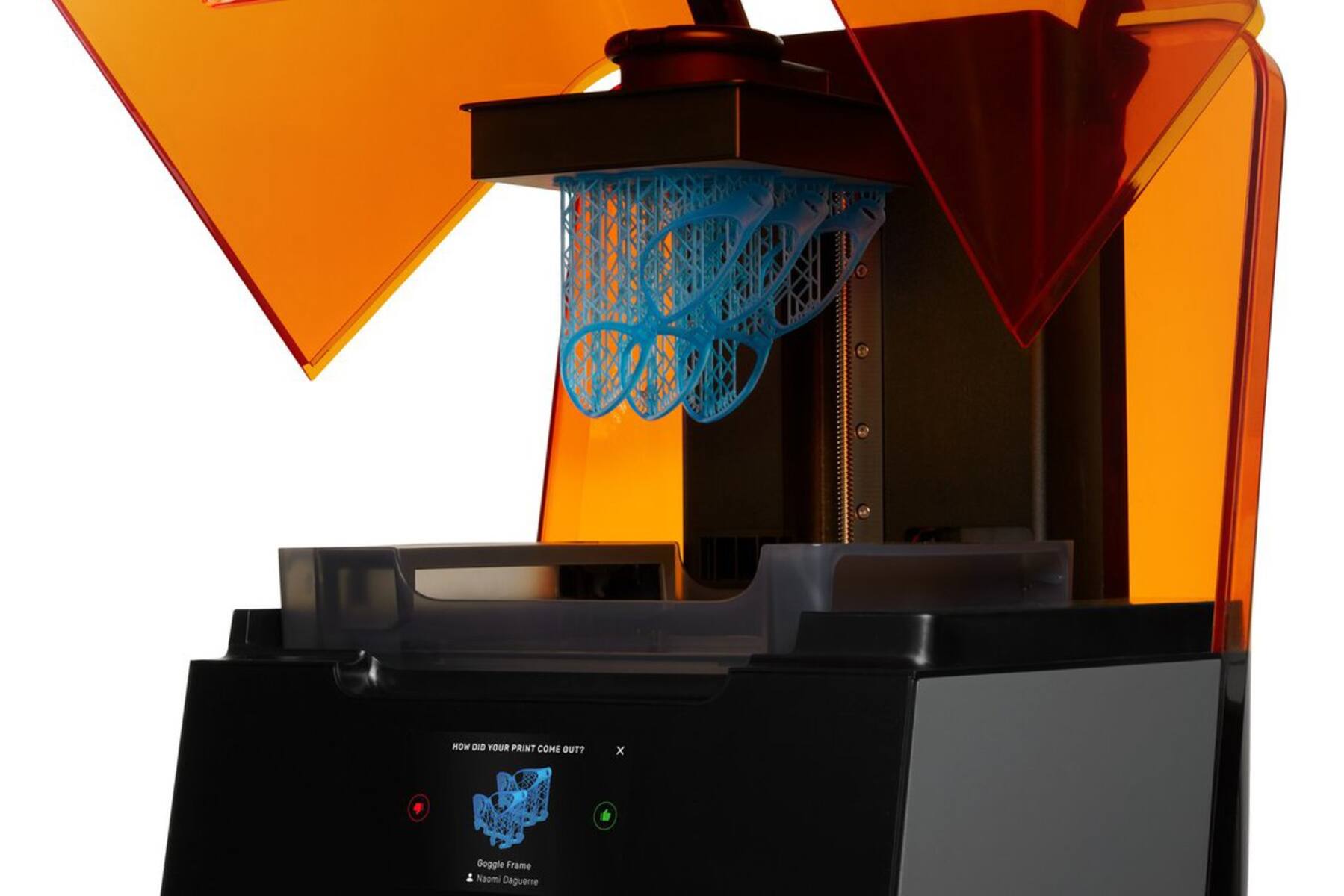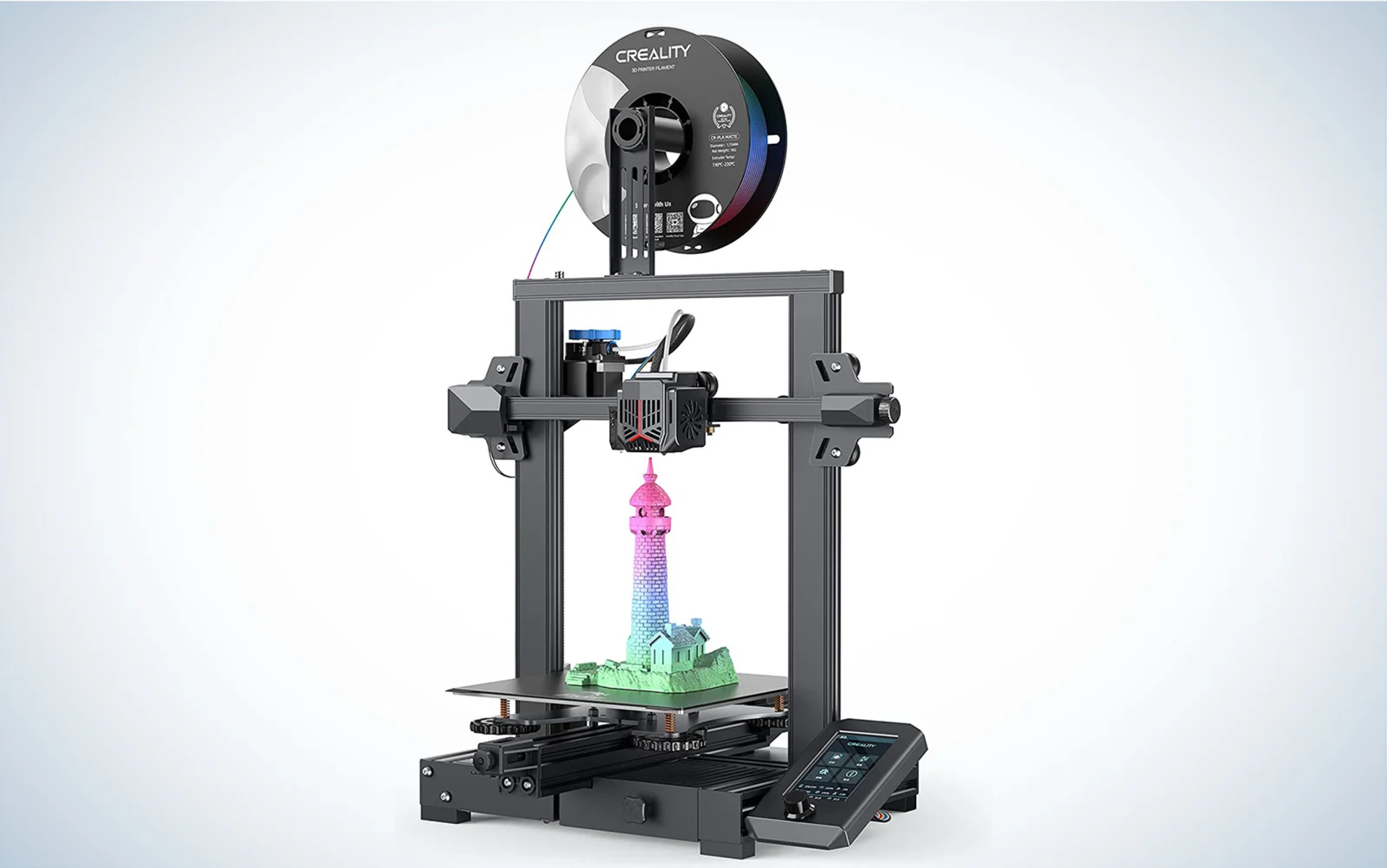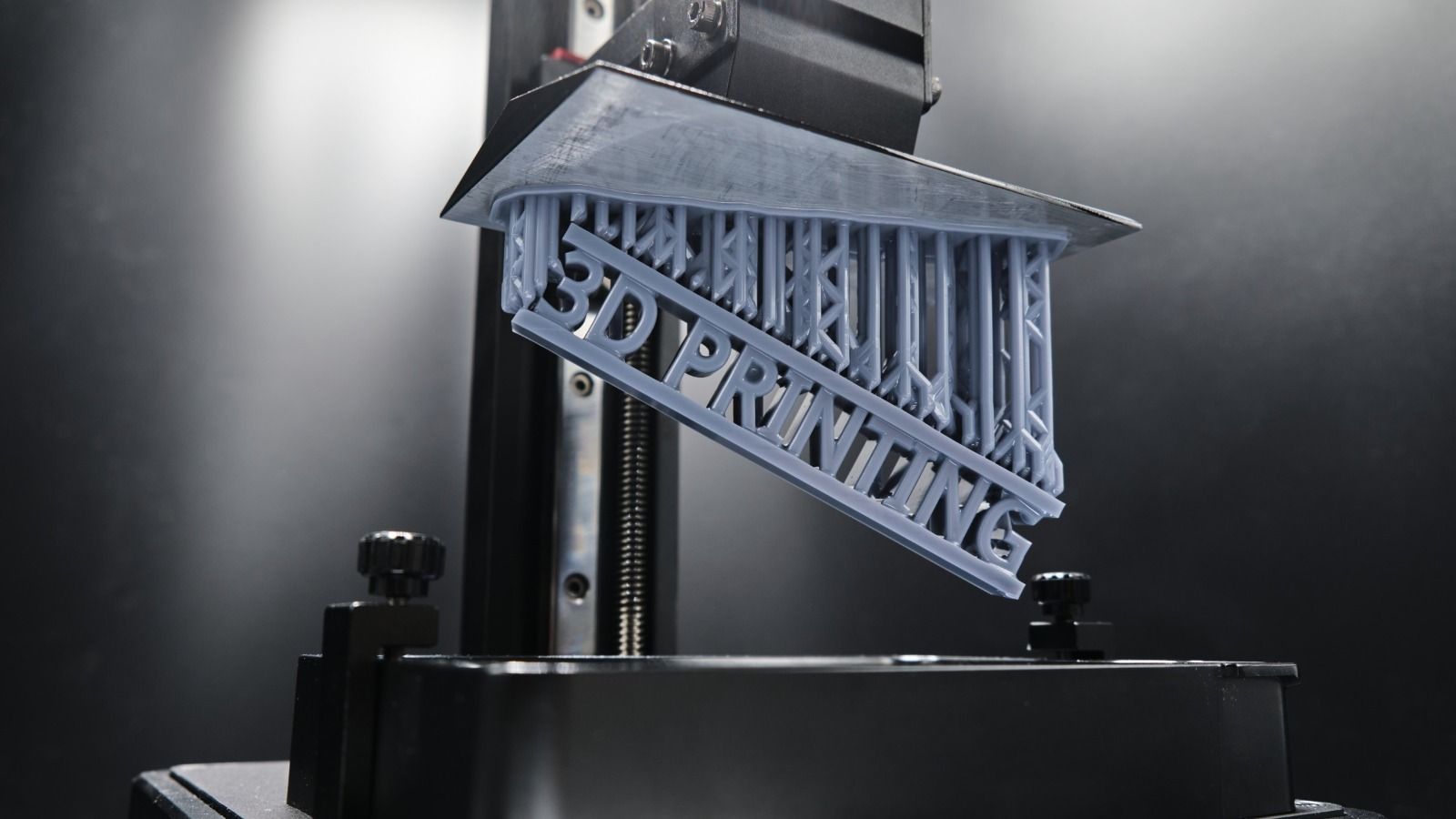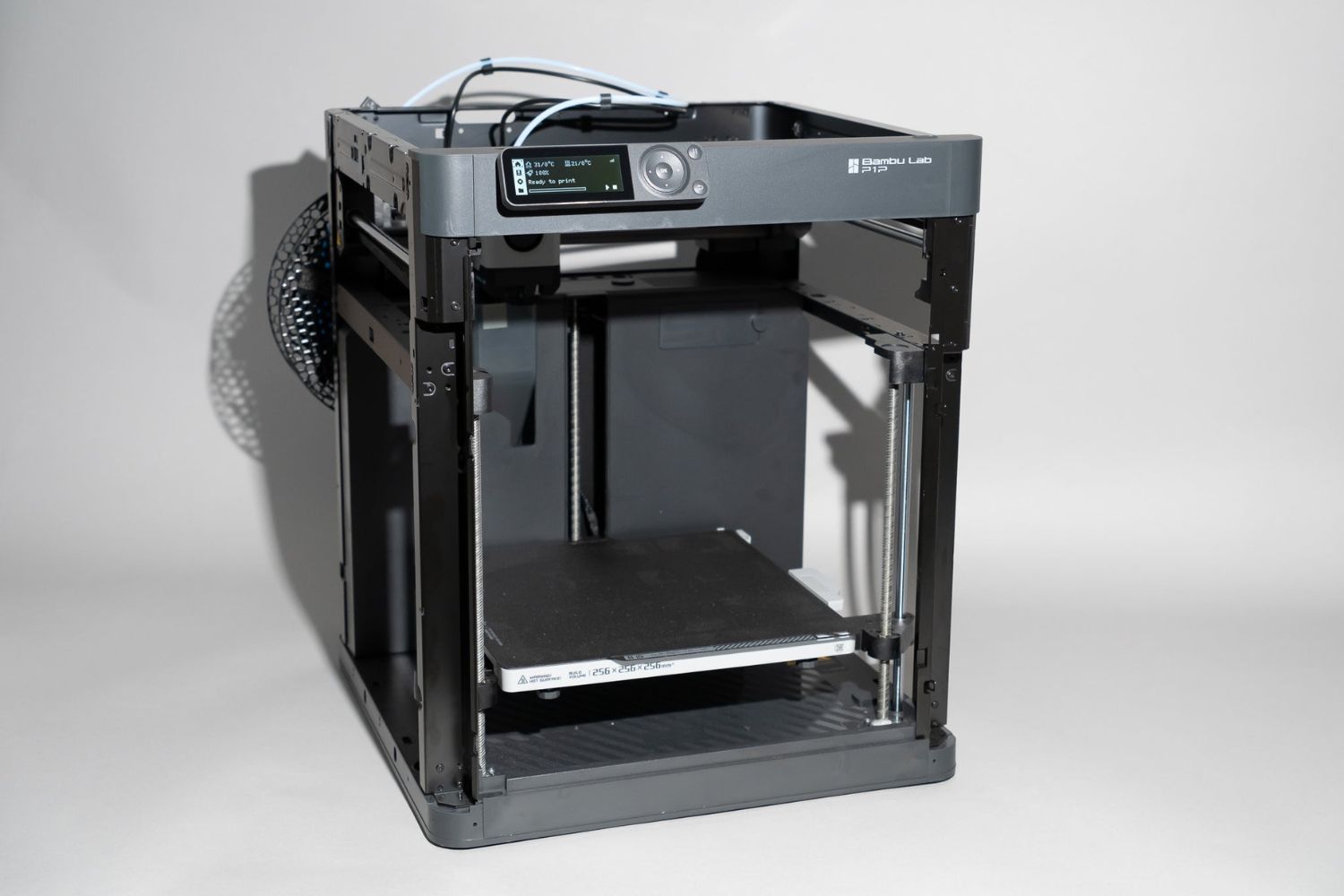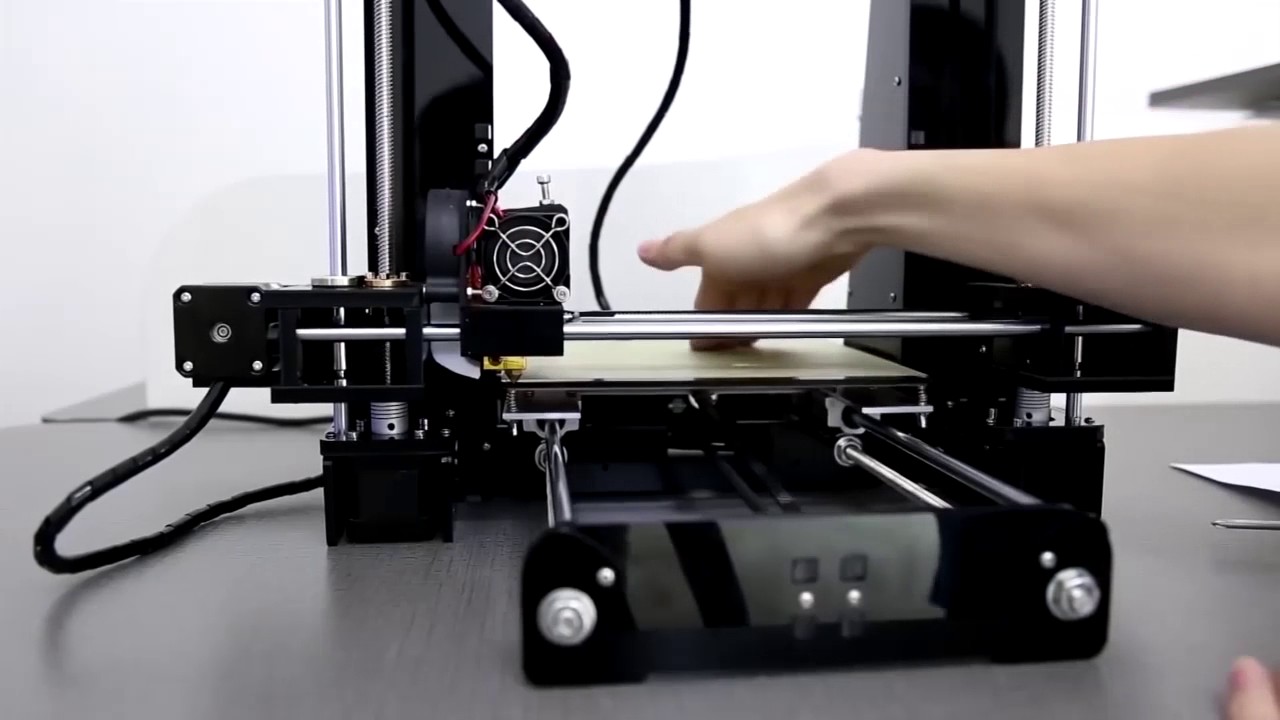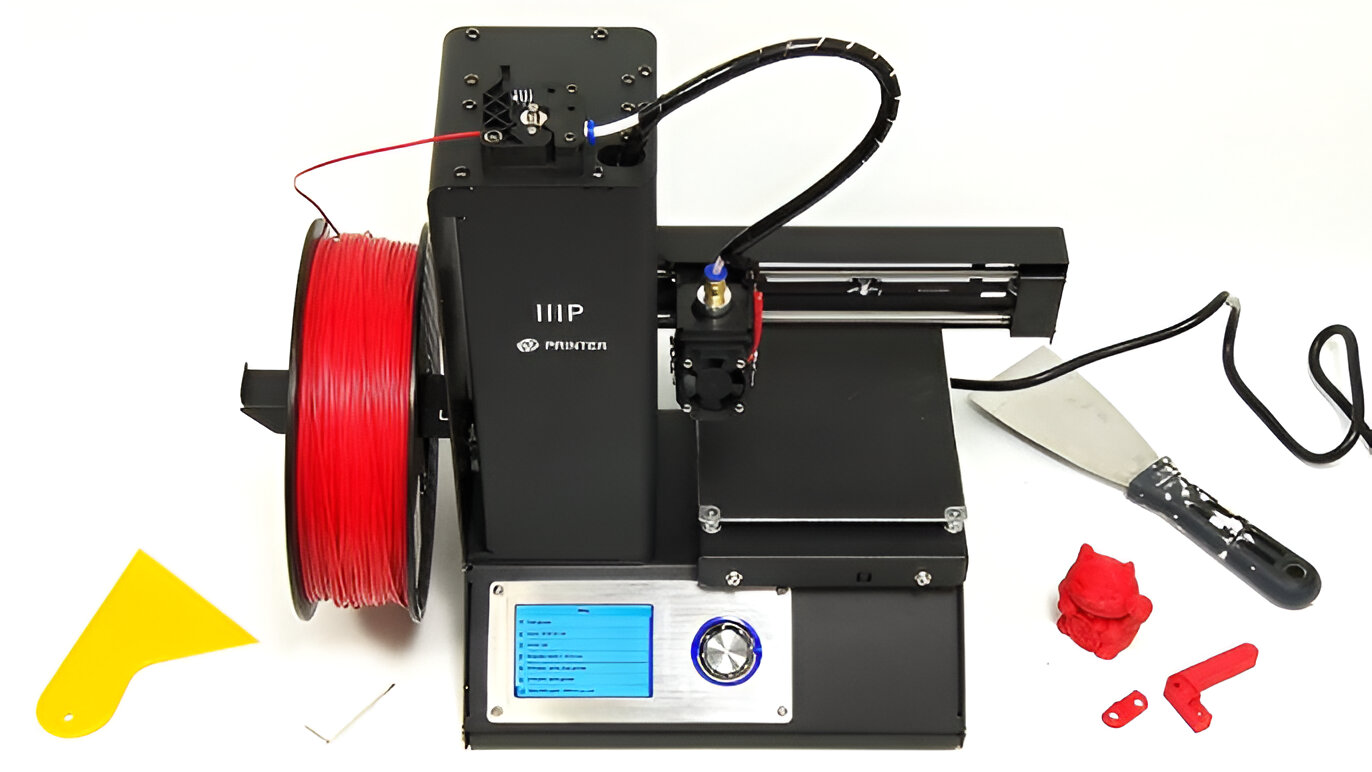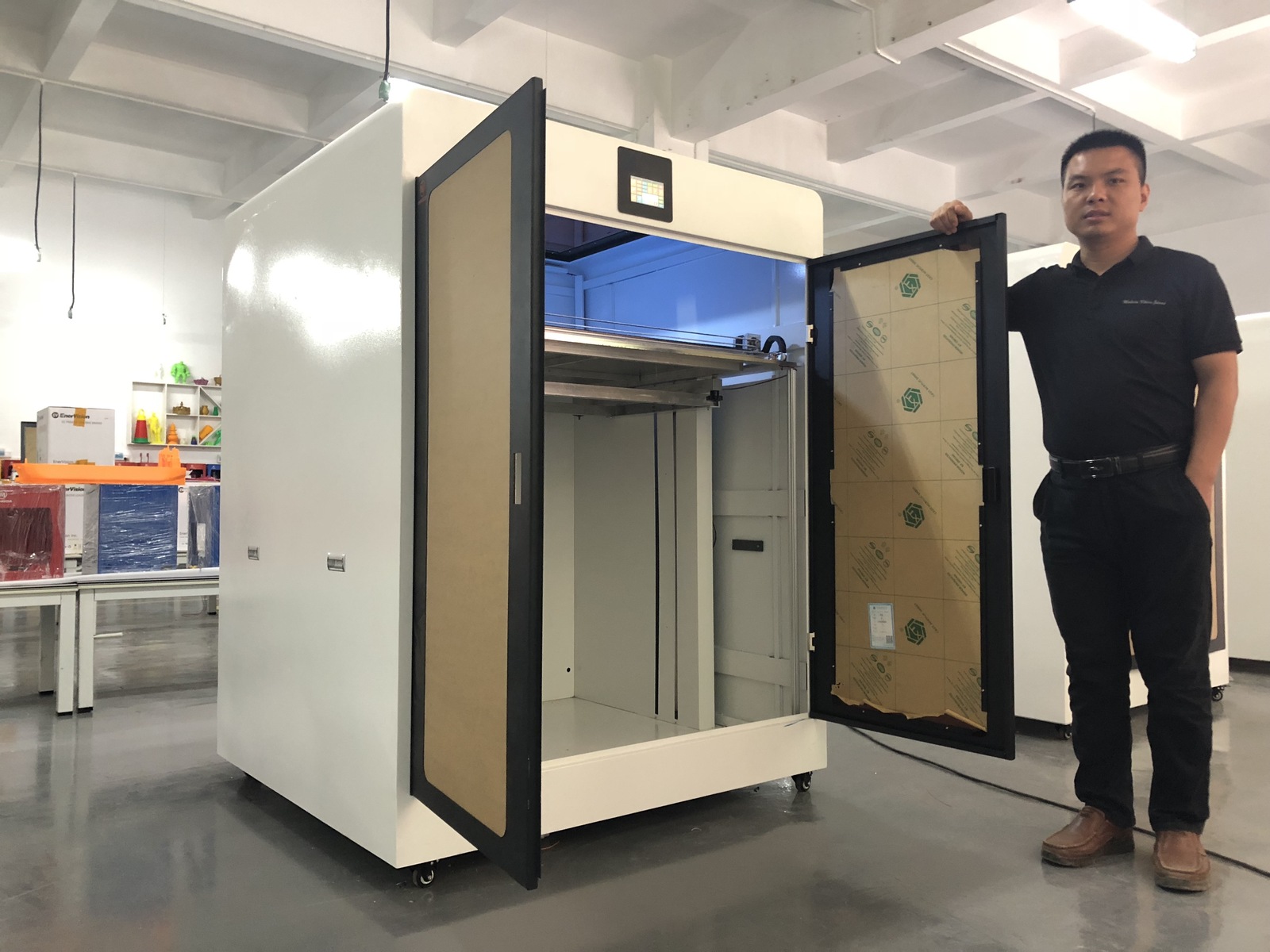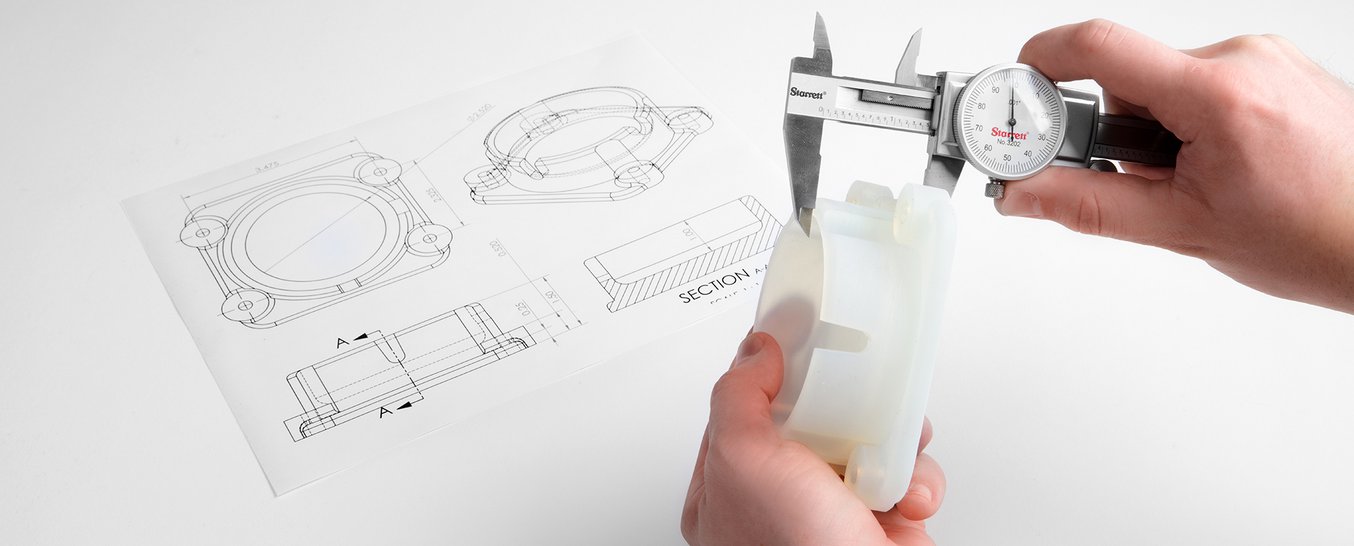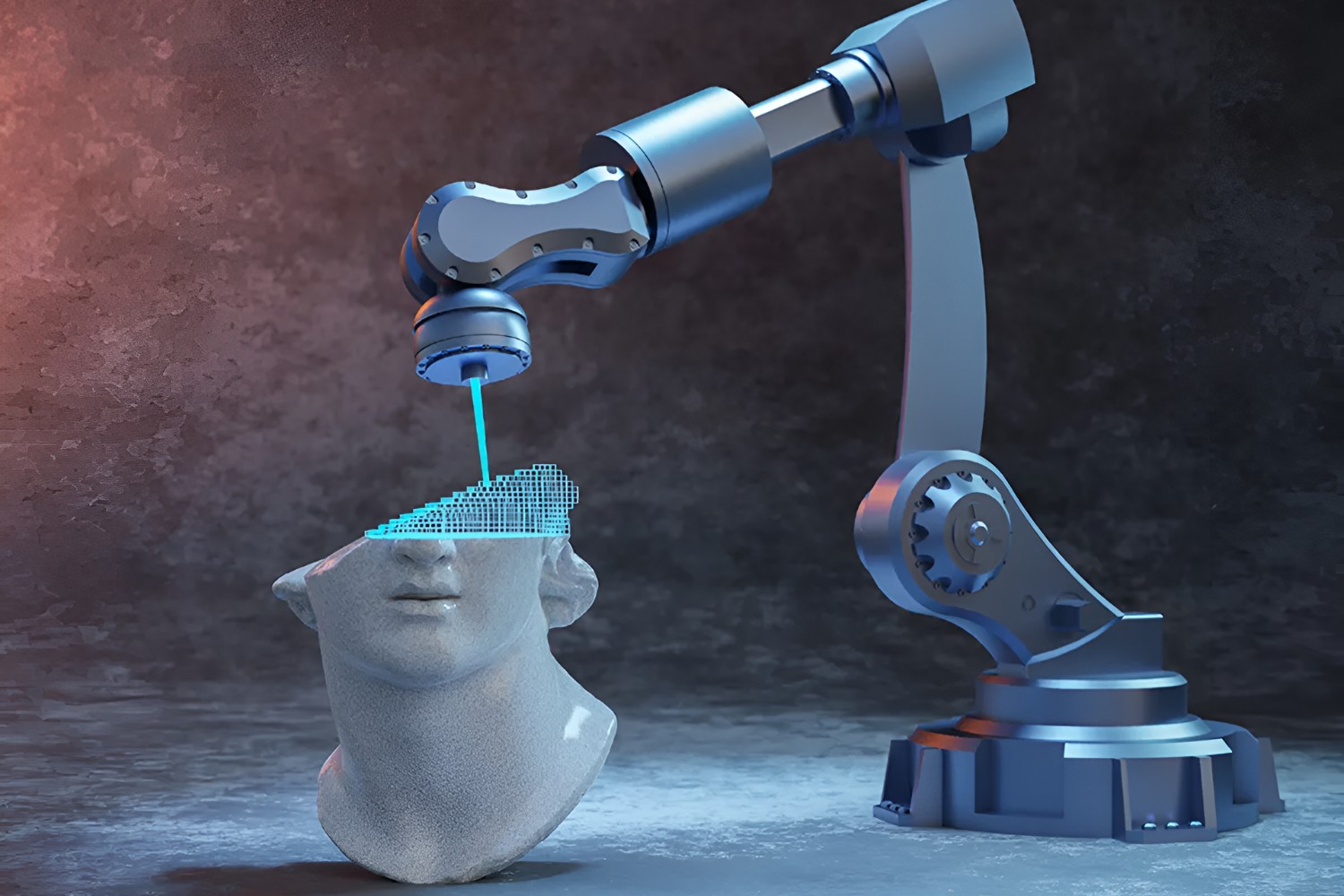Introduction
Welcome to the world of 3D printing, a revolutionary technology that has transformed the way we design and create objects. Whether you are a hobbyist, an engineer, or an entrepreneur, 3D printing offers endless possibilities to bring your ideas to life. However, with numerous types of 3D printers available on the market, it can be challenging to determine which one will provide the best resolution for your specific needs.
In this article, we will explore the various types of 3D printers and compare their resolutions to help you make an informed decision. Resolution refers to the level of detail and precision that a printer can achieve, which plays a crucial role in the quality of the final printed object. By understanding the differences between the different types of 3D printers, you will be able to choose the one that best suits your requirements.
Before we dive into the specifics, let’s briefly understand how 3D printing works. In essence, 3D printing is an additive manufacturing process that creates three-dimensional objects layer by layer. These layers are built using a variety of materials, such as plastic, resin, or metal, depending on the printer technology being used. Each type of 3D printer employs a unique method to deposit or solidify these materials, resulting in different levels of resolution.
Now let’s delve into the different types of 3D printers and their respective resolutions. From Fused Deposition Modeling (FDM) to Stereolithography (SLA) and Digital Light Processing (DLP), each technique has its own strengths and limitations. By understanding these differences, you can determine which printer will deliver the best resolution for your specific application.
Fused Deposition Modeling (FDM)
Fused Deposition Modeling (FDM) is one of the most widely used and accessible 3D printing technologies available. It works by extruding melted thermoplastic filament through a nozzle, which deposits the material layer by layer to build the object. FDM printers are known for their affordability and ease of use, making them popular among hobbyists and beginners.
When it comes to resolution, FDM printers offer a moderate level of detail. The resolution is mainly determined by the size of the nozzle and the layer height. Smaller nozzles and thinner layers generally result in higher resolution prints. However, it is important to note that FDM printers may not achieve the same level of precision as more advanced techniques.
The layer lines, or ridges, are a characteristic feature of FDM prints. Depending on the quality of the printer and the settings used, these lines can be more or less visible. Post-processing techniques such as sanding or acetone vapor smoothing can help to minimize the visibility of layer lines and improve the overall appearance of the print.
While FDM may not offer the highest resolution compared to other 3D printing technologies, it excels in versatility and material options. FDM printers can work with various thermoplastics, including ABS, PLA, and PETG, allowing for a wide range of applications. From functional prototypes to household items and even cosplay props, FDM can bring your designs to life with decent resolution.
In summary, Fused Deposition Modeling (FDM) is a practical and cost-effective 3D printing technique that offers moderate resolution. While it may not provide the highest level of detail, it compensates with its versatility and affordability. FDM printers are an excellent choice for beginners or those with budget constraints who still want to enjoy the benefits of 3D printing.
Stereolithography (SLA)
Stereolithography (SLA) is a type of 3D printing technology that utilizes photopolymerization to create precise and highly-detailed objects. Unlike FDM, SLA uses a liquid resin that is cured layer by layer using a UV laser. This process results in exceptionally smooth and accurate prints with intricate details.
When it comes to resolution, SLA printers excel in producing high-quality prints with fine details. The laser beam used in SLA printers has a small spot size, allowing for precise control over the curing process. This results in prints with smooth surfaces and minimal visible layer lines. Additionally, SLA printers typically have a smaller layer height, further enhancing the level of detail achieved.
SLA printers are particularly well-suited for applications that require intricate and complex geometries, such as jewelry, dental models, and miniatures. The high resolution achieved by SLA can capture even the tiniest details, resulting in visually stunning and accurate prints.
However, it is important to note that SLA printers can be more expensive compared to FDM printers, both in terms of upfront costs and materials. The resin used in SLA printing tends to be more costly, and the printing process itself can be slower due to the curing time required for each layer.
Overall, Stereolithography (SLA) is a 3D printing technology that offers exceptional resolution and detail. It is an ideal choice for applications that demand precise and visually appealing prints. From intricate jewelry designs to highly-detailed prototypes, SLA printers can bring your creations to life with outstanding resolution and accuracy.
Digital Light Processing (DLP)
Digital Light Processing (DLP) is another popular 3D printing technology that utilizes a digital light projector to cure liquid resin layer by layer. Similar to SLA, DLP achieves high-resolution prints with exceptional detail. However, there are some key differences between the two methods.
One advantage of DLP is its faster printing speed compared to SLA. This is due to the fact that DLP printers can cure an entire layer simultaneously, while SLA printers cure each layer individually. The speed of DLP printing makes it particularly suitable for producing large quantities of small or medium-sized prints.
When it comes to resolution, DLP printers offer excellent precision and detail. The digital light projector used in DLP technology has a high pixel density, allowing for the projection of extremely fine details onto the liquid resin. As a result, DLP prints can achieve smooth surfaces and intricate features with minimal visible layer lines.
Another advantage of DLP technology is its ability to use a wide range of materials. While SLA printing often requires specific resins designed for the printer, DLP printers can often work with a variety of resins, providing users with more options and flexibility.
It’s important to note that DLP prints may have a slight roughness on the surface due to the pixelated nature of the projector. However, this can be easily mitigated through post-processing techniques such as sanding or polishing.
Digital Light Processing (DLP) is a versatile 3D printing technology that offers outstanding resolution and printing speed. It is a great choice for applications that require high levels of detail and accuracy, such as dental models, intricate prototypes, and small-scale production runs. With its fast print speed and compatibility with various materials, DLP printers are a valuable tool for both professionals and enthusiasts alike.
Selective Laser Sintering (SLS)
Selective Laser Sintering (SLS) is a 3D printing technology that uses a high-powered laser to selectively fuse powdered materials, typically nylon or other thermoplastics, layer by layer. This process allows for the creation of durable and functional parts with excellent resolution and accuracy.
One of the primary strengths of SLS is its ability to produce complex geometries and intricate designs with high resolution. Since the powdered materials are uniformly spread across the build platform, there is no need for support structures. This results in parts with smooth surfaces and intricate details, making SLS well-suited for producing functional prototypes, end-use parts, and even customizable products.
The resolution achieved with SLS depends on various factors, including the particle size of the powdered material and the layer thickness. Smaller particle sizes and thinner layers generally result in higher resolution prints. However, it’s worth noting that SLS prints may have a slightly grainy texture due to the nature of the powder material.
Another advantage of SLS is its ability to print with a wide range of materials, including nylon, polycarbonate, and even metal powders. This versatility enables the production of parts with different characteristics, such as flexibility, strength, or heat resistance.
While SLS offers exceptional resolution and material versatility, it should be noted that SLS printers can be more expensive compared to other 3D printing technologies. The high-powered laser and the need for a controlled environment add to the cost of the equipment. Additionally, the post-processing step of removing excess powder and potentially performing additional treatments can be time-consuming and require specialized equipment.
In summary, Selective Laser Sintering (SLS) is a 3D printing technology known for its high resolution, intricate detailing, and versatility with materials. SLS is an excellent choice for producing functional and customized parts with exceptional accuracy and durability, making it a preferred method for industries such as automotive, aerospace, and medical. Although SLS printers require a higher investment, their ability to create complex and high-quality parts makes them valuable tools for a range of applications.
MultiJet Printing (MJP)
MultiJet Printing (MJP) is a 3D printing technology that utilizes an inkjet-style print head to deposit layers of UV-curable liquid resin onto a build platform. MJP offers excellent resolution and accuracy, making it suitable for a wide range of applications, including prototyping, product development, and jewelry design.
One of the key advantages of MJP is its ability to achieve high resolution prints with detailed and smooth surfaces. The inkjet-style print head allows for precise droplet placement, resulting in fine details and minimal visible layer lines. Additionally, MJP printers typically have a smaller layer thickness capability, further enhancing the level of detail that can be achieved.
Another strength of MJP technology is its ability to print with multiple materials simultaneously. This allows for the creation of objects with different properties, such as rigid and flexible components in the same print. With the use of support materials that can be easily removed, complex geometries and overhangs can be successfully printed without compromising the overall structure and resolution of the final product.
MJP printers are known for their speed and efficiency. The inkjet-style print head allows for the simultaneous printing of multiple layers, resulting in faster build times compared to other 3D printing technologies. This makes MJP an attractive option for projects with tight deadlines or high-volume production needs.
One consideration when using MJP technology is the need for post-processing steps. After printing, the excess support material must be removed, and the object often requires additional cleaning and curing. However, advancements in MJP printers have reduced the need for extensive post-processing, allowing for faster turnaround times and smoother production workflows.
In summary, MultiJet Printing (MJP) is a versatile 3D printing technology that offers high resolution, speed, and material versatility. With its ability to create fine details and smooth surfaces, MJP is ideal for applications that require intricate designs, functional prototypes, and small-scale production. By combining multiple materials in a single print, MJP opens up opportunities for innovative and complex creations. Although post-processing may be required, MJP provides a valuable solution for those seeking high-quality prints with exceptional resolution and accuracy.
Comparison of Resolutions
Now that we have explored different 3D printing technologies and their respective resolutions, let’s compare them to help you make an informed decision based on your specific requirements.
When it comes to resolution, each technology has its strengths and limitations. SLA and DLP printers typically offer the highest resolution, capable of producing prints with intricate details and smooth surfaces. These technologies excel in applications that require fine features and precise dimensions, such as jewelry, dental models, and miniatures.
On the other hand, FDM printers generally offer a moderate level of resolution. While they may not achieve the same level of detail as SLA or DLP, FDM printers are versatile, affordable, and widely accessible, making them suitable for a range of applications – from rapid prototyping and functional parts to artistic creations and educational projects.
SLS technology falls in between SLA/DLP and FDM in terms of resolution. With SLS, you can achieve high-resolution prints with exceptional detail, particularly when it comes to complex geometries and functional prototypes. SLS is often preferred for producing parts that require durability, strength, and customization.
Lastly, MJP technology offers a balance between resolution, speed, and material versatility. MJP printers can produce high-resolution prints with fine details and smooth surfaces. They are a suitable choice for projects that require a quick turnaround time without compromising on quality.
It’s important to consider your specific needs when comparing resolutions. Think about the level of detail you require for your prints, the size of the objects you intend to create, the materials you want to work with, and your budget constraints. By evaluating these factors and understanding the strengths of each technology, you can make an informed decision that aligns with your goals and project requirements.
In summary, SLA and DLP printers offer the highest resolution, while FDM printers provide a moderate level of detail and affordability. SLS falls in between with high resolution and material versatility, and MJP offers a balance between resolution, speed, and versatility. Assessing your needs and considering the strengths of each technology will guide you in choosing the right 3D printer for your specific application.
Conclusion
Choosing the right 3D printer with the best resolution for your needs is a crucial step in ensuring the success of your projects. Understanding the differences between the various 3D printing technologies and their respective resolutions allows you to make an informed decision based on your specific requirements.
SLA and DLP printers stand out for their exceptional resolution, capable of producing prints with intricate details and smooth surfaces. These technologies are ideal for applications that demand high levels of precision, such as jewelry, dental models, and miniatures.
FDM printers offer a moderate level of resolution, making them versatile, affordable, and accessible to a wide range of users. They are suitable for various applications, from rapid prototyping and functional parts to artistic creations and educational projects.
SLS technology provides high-resolution prints with intricate detailing, particularly for complex geometries and functional prototypes. It offers a broad range of materials, making it valuable for creating durable and customizable parts.
MJP printers strike a balance between resolution, speed, and material versatility. They produce high-resolution prints with fine details and smooth surfaces, making them suitable for projects that require quick turnaround times without compromising quality.
Ultimately, your choice of 3D printer will depend on your specific needs, including the level of detail required, the size of objects to be printed, the materials to be used, and your budget constraints. By evaluating these factors and understanding the strengths of each technology, you can select the ideal 3D printer that meets your expectations and enables you to bring your designs to life.
Embracing the possibilities offered by 3D printing and harnessing the power of advanced technologies with remarkable resolutions can unlock countless opportunities in various industries. Whether you are a hobbyist, an engineer, or an entrepreneur, choosing the right 3D printer with the best resolution will pave the way for successful and visually captivating creations.







